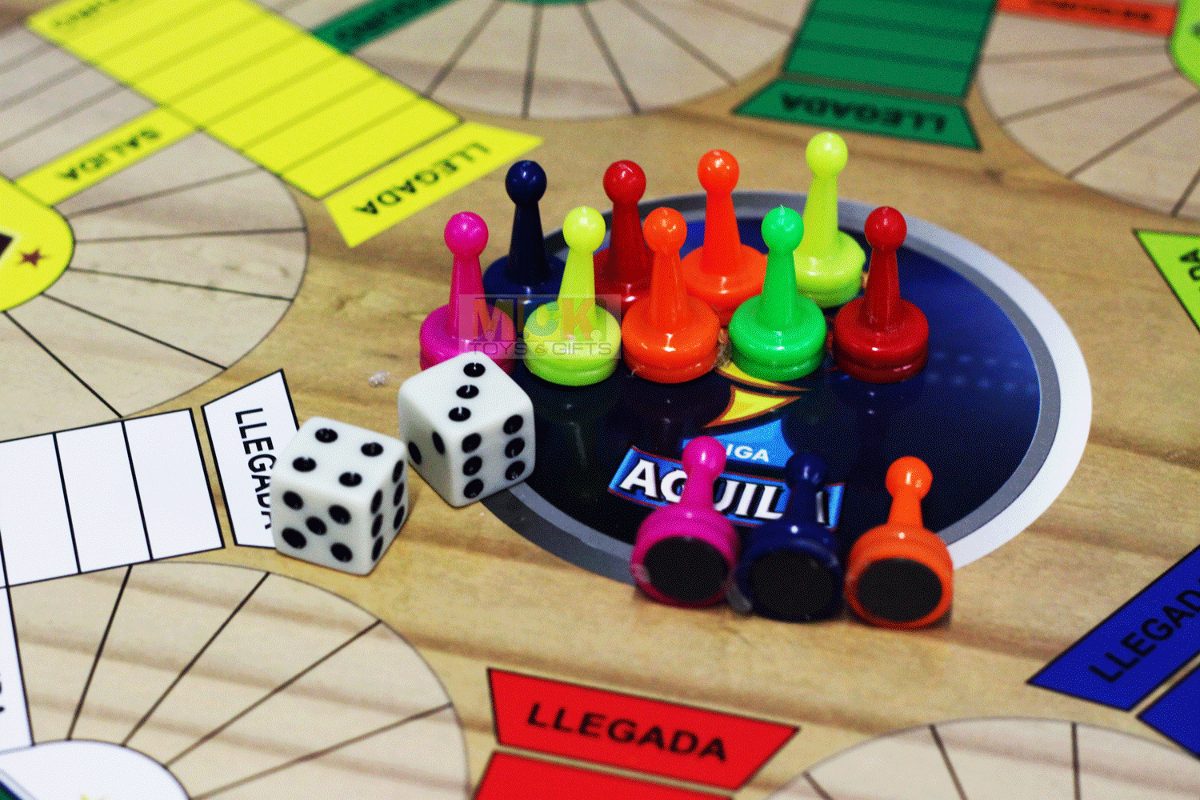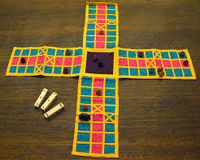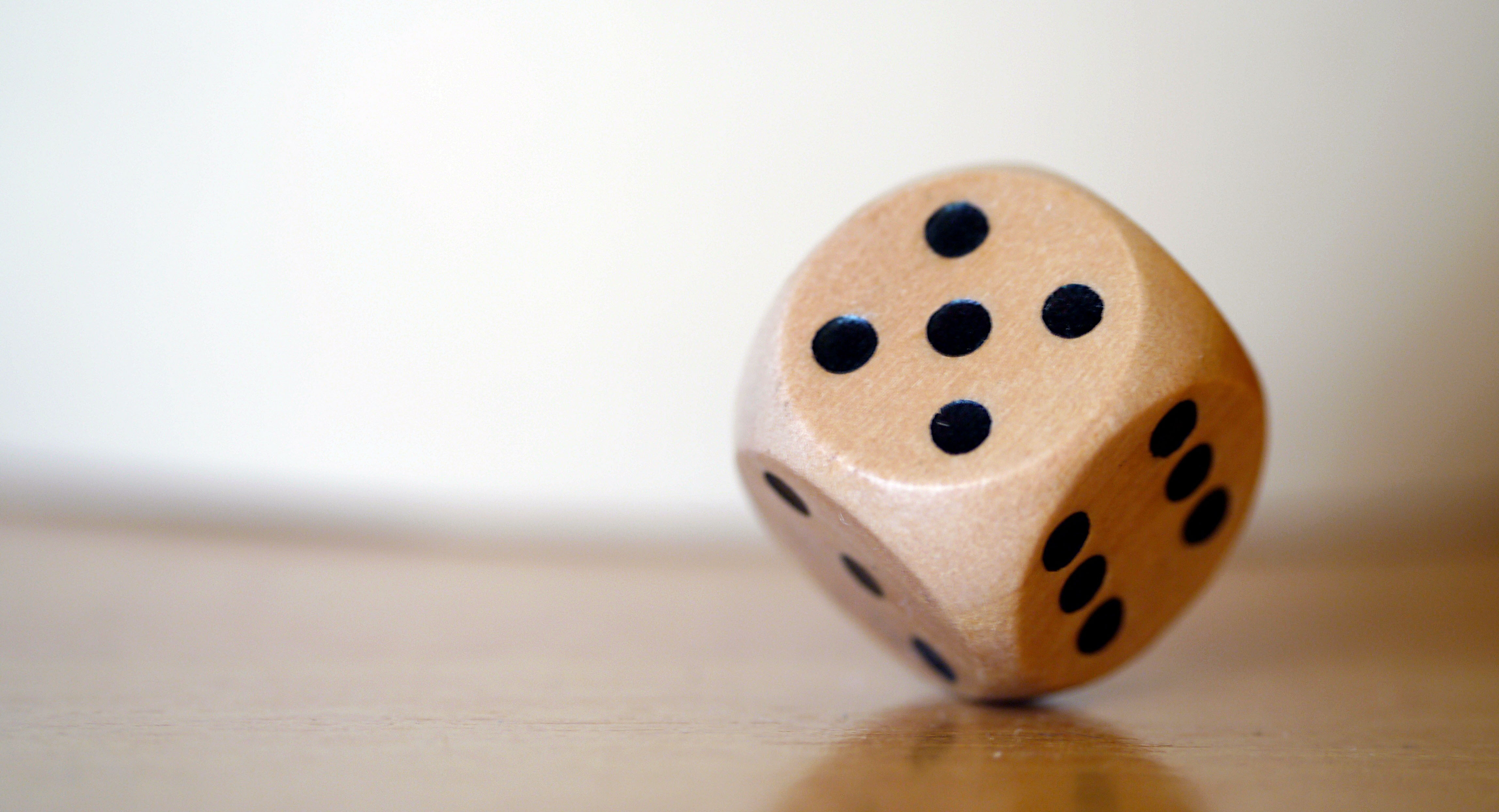Parques Game Review
Parcheesi (Colombian version)

One of my favourite traditional Colombian games I used to play with friends and family. Even though it has been said that the game has indian origins many years ago, parques (known as parcheesi in the U.S.) is a very traditional game played in Colombia. I would like to share with you the most common colombian version of the game. You might notice some similarities to how it’s usually played in the U.S. and if you’ve never heard of this game, well… know your going to know what it is about.
Context
Parques is the Colombian version, there are other versions with other similar names. The word itself (parques) has no meaning. It is an assumption that the game has some indian origin because there are similarities found within the game compared to Ludo and Parchisi (board game originated in the medieval india). No parques game is played in other countries. Parqués is a mixture of the original Indian game and the influences of local Colombian culture.
Colombian Culture
Even thought, parques is the colombian version, depending on the regions the game is played, the game mechanics and rules may vary in some aspects.
It is a game played by kids and adults no matter their age. Adults tend to play by betting money on the first piece, on capturing pieces or winning the game. The boards are handmade by those who are fans of the game and there can be different styles. You can find boards for 4, 6 or 8 players. The boards tend to contain illustrations or pictures of the colombian soccer selection, national soccer teams, singers, actors, and other cultural related aspects. The board is nicely elaborated with a glass on top which covers the board and with a neat wooden frame holding everything into place.
Gameplay
Before you start playing
How to start the game
During the game
Game Mechanics
Racing would be the game’s main mechanic, as you are competing against the rest of the players to see who manages to pass all of their pieces through the finish line first as they encounter obstacles on the way.
The game is mostly based on the dice rolling mechanic, no cards to be involved. Your moves are based on the dice values and you are in charge to make a wise decision.
You are on your own, all players are against each other and don’t try to feel compassion with your enemy, or else you’ll pay the consequences as mentioned in the rules. Don’t try to pretend you didn’t see someone elses piece’s, it won’t end up nice for you if another player notices.
My game experience
Lots of concentration is required the fact that the more players there are, the higher are the chances to be sent to jail. You must move wisely, be careful which pieces you are willing to move.
I mostly used to play with my family and bet money on the winner. When money was set on the table, you could feel that adrenaline running throughout your body not wanting to lose the bet. It was so frustrating when I was so close to the finish line and suddenly I was sent to jail. You can play with a maximum of 8 players (depending on the board) and if you play with four pieces each, this makes the game more challenging for everybody and it takes more time to get to the finish line. I had to predict the other player’s moves and risk my pieces. There were some strategies I managed to figure out after playing this game many times. As you play more, you memorize how many slots there are to get from one point to another. I remember at first, y had to count 1, 2, 3, 4… and this made the game slower. But when there were experienced players, it was so fast paced that they analyzed the whole board so quickly to make a move. I also used to play different game modes, you can find several ways to mod the game. That is why within the country, you can find different ways to play the game, some rules just changed a bit. The most common one I loved to play was "base to base". It was very challenging, you could only make move your piece from one base to another base up to the end. If you rolled the dice and your piece would land somewhere other than the base, the move is not valid and you can't roll again, you had to wait until it was your turn.
My opinion
I love this game. It's game mechanics, the excitement once you get the hang of it and it brings me so many memories. You train you visual perception, do quick math in your head, you can make your own game modes. This might sound like a game of luck, but there is more into that, it was very important to move wisely or else your good luck could be wasted.
I invite you to give it a try, have fun with parques and if you have parcheesi, there are several similarities so you can have the experience of playing the game.

One of my favourite traditional Colombian games I used to play with friends and family. Even though it has been said that the game has indian origins many years ago, parques (known as parcheesi in the U.S.) is a very traditional game played in Colombia. I would like to share with you the most common colombian version of the game. You might notice some similarities to how it’s usually played in the U.S. and if you’ve never heard of this game, well… know your going to know what it is about.
Context
 |
| Parchisi Indian Game |
 |
| 8 player board. You can also see the images soccer players, just for decoration. |
Even thought, parques is the colombian version, depending on the regions the game is played, the game mechanics and rules may vary in some aspects.
It is a game played by kids and adults no matter their age. Adults tend to play by betting money on the first piece, on capturing pieces or winning the game. The boards are handmade by those who are fans of the game and there can be different styles. You can find boards for 4, 6 or 8 players. The boards tend to contain illustrations or pictures of the colombian soccer selection, national soccer teams, singers, actors, and other cultural related aspects. The board is nicely elaborated with a glass on top which covers the board and with a neat wooden frame holding everything into place.
Gameplay
Before you start playing
- Each player gets an equal amount of pieces compared with the other players.
- Players can play a game with a minimum of 2 pieces or with up to 4 pieces.
- The colour for the pieces for each player, has to be according to the colour of the jail in able to difincarate the pieces.
- There are 2 dice for everyone to use when it’s your turn (most common). In other cases, players can use their own pair of dice instead of rotating them. It’s your choice.
- Players place the pieces in the jail box at the beginning of the game.
How to start the game
- Each player has three tries to roll the dice and try to get an equal pair of numbers. Ex: 2 & 2, 5 & 5 etc.
- Whoever gets the pair, the player can put all their dice on your home safe base and can move one piece according to the value of one dice.
- If the others still couldn’t manage to get the pair, well… keep trying.
 |
| The green pieces are at the green jail. |
During the game
- The player’s goal is to move from the home base all the way around the board as you throw the dices and get to your finish line.
- During your way to the finish line, there will be safe zones where you won’t be sent to your jail if someone lands on where you are standing.
- If someone lands where you are not standing on a safe zone, you’ll have to send your piece to your jail.
- The pieces in jail can only come out if you roll a pair. Just like in the start.
- You can move one piece according to one of the dice’s values and another piece according to the other dice’s value.
- If someone saw you had the chance to send someone to jail, but you didn’t and move the pieces somewhere else, you'll be sent to jail by the player that saw your wrong move.
- If you land on someone's home safe base and the player on his/her turn manages to free their piece at that moment, your piece is sent to jail.
- If you have all four pieces back in jail during the game, you are only allowed to take out two pieces at a time if you get the pair.
- If you are about to make it to the finish line, you have to roll the exact number required to finish.
- You always have to use both dice to move your pieces. If you only want to use one to move only one, that is not allowed, you have to make use of the other dice.
- The only time you can roll one dice, is when you only have one piece left and it's just about to make it to the finish line. In this case you have to use only one dice.

Game Mechanics
Racing would be the game’s main mechanic, as you are competing against the rest of the players to see who manages to pass all of their pieces through the finish line first as they encounter obstacles on the way.
The game is mostly based on the dice rolling mechanic, no cards to be involved. Your moves are based on the dice values and you are in charge to make a wise decision.
You are on your own, all players are against each other and don’t try to feel compassion with your enemy, or else you’ll pay the consequences as mentioned in the rules. Don’t try to pretend you didn’t see someone elses piece’s, it won’t end up nice for you if another player notices.
My game experience
Lots of concentration is required the fact that the more players there are, the higher are the chances to be sent to jail. You must move wisely, be careful which pieces you are willing to move.
 |
| I like this design |
My opinion
I love this game. It's game mechanics, the excitement once you get the hang of it and it brings me so many memories. You train you visual perception, do quick math in your head, you can make your own game modes. This might sound like a game of luck, but there is more into that, it was very important to move wisely or else your good luck could be wasted.
 |
| This is the board I used to play, as you can see, there are images, a nice wooden frame and the game can be played with a maximim of 6 players. |
I invite you to give it a try, have fun with parques and if you have parcheesi, there are several similarities so you can have the experience of playing the game.



Comments
Post a Comment